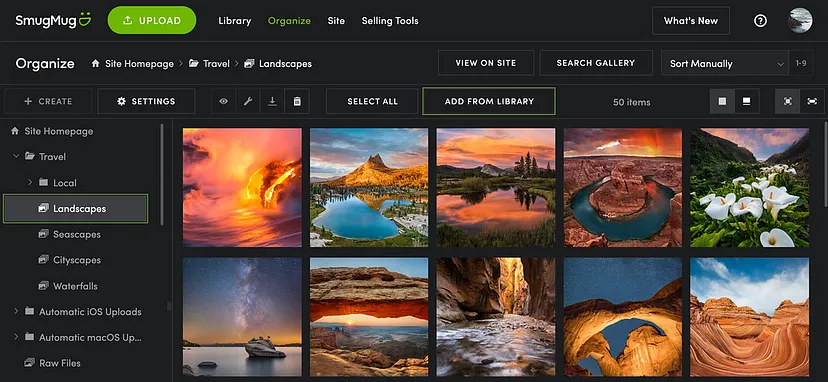
Do you need to store photos online? Photos are more than just memories; they’re vital to our personal and professional lives. From capturing precious moments with family to showcasing your work portfolio, images play a crucial role in how we connect and share stories.
But with the ever-growing volume of photos we accumulate, knowing how to store photos online becomes paramount. Understanding how to store photos online empowers you to make informed decisions about safeguarding your digital treasures.
For personal use, knowing how to store photos online offers a convenient and accessible solution. Cloud storage services like Google Photos or Amazon Photos provide a seemingly endless vault for your memories.
Services that focus on how to store photos online are often free for basic storage tiers, allowing you to upload and share photos with friends and family easily. Accessibility is a crucial advantage – you can view your photos from any device with an internet connection, be it your smartphone, tablet, or computer. This makes it easy to relive special occasions or share pictures on the go.
Additionally, automatic upload features when you store photos online offered by many services ensure your photos are backed up as you take them, eliminating the risk of losing them due to a damaged phone or corrupted memory card.
However, there are limitations to consider when you want to store photos online. Free storage tiers can fill up quickly when you frequently store photos online, especially for high-resolution photos.
Furthermore, some services focused on when you store photos online compress uploaded images to save space, affecting image quality. While some offer plans with uncompressed storage, these typically come at an additional cost. Understanding these trade-offs is crucial for ensuring your irreplaceable memories are preserved in their full glory.
For professional photographers, online storage goes beyond convenience. A robust platform is essential for showcasing their work, attracting clients, and generating income. Services like SmugMug cater specifically to photographers, offering features like customizable online galleries and e-commerce tools. This allows photographers to curate their portfolio, control how their work is presented, and sell prints or digital downloads directly through their gallery. Understanding these functionalities empowers photographers to establish a solid online presence and build a successful career.

Store Photos Online with SmugMug
SmugMug stands out as a premium photo storage platform for photographers who prioritize aesthetics and control. Unlike general cloud storage services, SmugMug caters specifically to photographers, offering a beautiful and customizable platform to showcase your work. You can design elegant online galleries with customizable layouts, watermarks, and password protection. SmugMug even allows you to sell your photos directly through your gallery, making it an attractive option for professional photographers or those who want to monetize their work. While SmugMug offers a free tier with limited storage, paid plans provide ample space and features to elevate your online presence.
Store Photos Online with Cloud Storage
Cloud storage services like Google Photos, Amazon Photos, and Microsoft OneDrive offer a convenient and accessible way to store your photos online. These services typically provide generous free storage, often enough for casual photographers. Upgrading to a paid plan unlocks additional storage space, making it a scalable solution for growing photo libraries. A significant advantage of cloud storage is accessibility. Your photos are accessible from any device with an internet connection, allowing you to easily share them with friends and family or edit them on the go. Additionally, cloud storage services often employ automatic upload features, ensuring your photos are backed up as you take them, offering peace of mind against accidental data loss on your devices.
However, there are limitations to consider. Free storage tiers can fill up quickly, especially for high-resolution photos. Some cloud storage services compress uploaded photos to save space, affecting image quality. While many offer uncompressed storage options, these typically come at an additional cost. It’s also important to be aware of the privacy policies of each service, as some may scan your photos for content moderation or advertising purposes.
Store Photos Online with Flickr
Flickr offers a unique blend of photo storage and a vibrant online photography community. It allows you to upload and store your photos, organize them into albums, and share them with the world. Flickr fosters a strong sense of community, where photographers of all skill levels can connect, share their work, and receive constructive criticism. Numerous groups and forums are dedicated to specific photography genres and techniques, providing valuable learning opportunities for enthusiasts. While Flickr offers a free tier with limited storage, a paid subscription unlocks additional features like ad-free browsing and higher upload limits.
While Flickr fosters a community atmosphere, it may not be the best choice for those seeking a strictly private photo storage solution. The platform is geared towards sharing and discovery, and the default setting makes your photos publicly viewable unless you adjust the privacy settings for each upload. Flickr’s interface might also feel less intuitive than dedicated cloud storage services.
Store Photos Online Beyond the Cloud
For those seeking maximum control over their photos and concerned about potential privacy issues with cloud storage, a local solution with remote backups offers a compelling alternative. This approach involves storing your pictures on a physical device like an external hard drive or a Network Attached Storage (NAS) drive. External hard drives are portable and affordable, making them a good option for essential backups. However, they are susceptible to physical damage or loss. NAS drives offer a more robust solution, providing centralized storage accessible from multiple devices within your home network.
To ensure redundancy and protect against hardware failure, it’s wise to implement a remote backup system in conjunction with local storage. This could involve periodically copying your photos to a separate cloud storage service or another physical device kept off-site. While this approach requires more technical setup and ongoing maintenance than cloud storage, it offers the ultimate control and security for your valuable photos.
A Hybrid Approach When You Store Photos Online
For many users, the ideal solution might be a hybrid approach combining different storage methods’ strengths. For instance, you could leverage a free cloud storage tier for easily accessible snapshots from your smartphone while using a dedicated photo storage service like SmugMug for your more curated collection. Local storage with remote backups offers another layer of security and control, particularly for irreplaceable photos. Ultimately, the best approach depends on your individual needs and priorities. Consider factors like the volume of images, how you plan to access them, budget constraints, and your comfort level with technology when deciding on the optimal storage strategy for your photos.
SmugMug offers the perfect blend of control and beauty. Design stunning, customizable galleries to showcase your work, complete with watermarks and privacy settings.
Sell your photos directly through your gallery and turn your passion into profit. Take control of your online presence and let SmugMug be your digital portfolio haven. Try SmugMug today and unleash the full potential of your photos.


